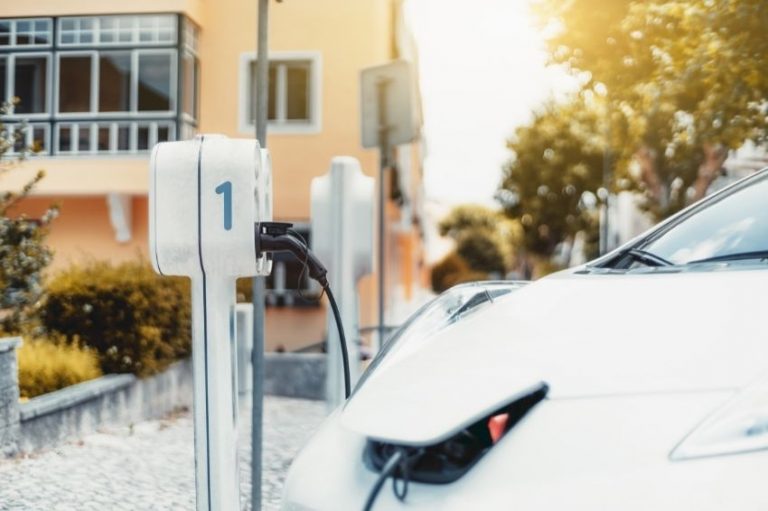Are electric vehicles sustainable or environmentally friendly? Being sustainable means, strictly speaking, not using natural resources in a way that avoids their depletion.
And being environmentally correct means, mainly, not polluting the air we breathe and not contributing to global warming, the cause of which is seen as the unrestrained emission of gases into the atmosphere – a reality that has begun to be experienced with great intensity by our planet. in the second half of the last century.
We normally associate electric vehicles with something clean and sustainable, as electric motorization partially or completely replaces combustion engines, supposedly ceasing or reducing the emission of gases into the atmosphere and the use of non-renewable fossil resources.
The authors of (Goldin et al., 2014) point out that in the United States the largest source of air pollution comes from transportation systems. A study showed that in 2006, transport was responsible for 50% of carbon monoxide emissions, more than 30% of nitrogen oxide emissions and approximately 25% of hydrocarbon emissions.
According to observations made in the study presented by (Mwasilu et al., 2014), an electric vehicle can eliminate 600 kg of CO2 annually with the use of solar energy at charging stations in workplaces – that is, charging during the day.
In countries that still widely use fossil sources to produce electricity, the adoption of solar sources integrated into charging systems will be the only way to curb the use of fossil fuels as the fleet of electric vehicles grows.
Without the massive penetration of photovoltaic solar energy, in many countries fuel consumption will simply be shifted from vehicles to electricity generating plants (Kurien, 2020) – deconstructing the idea of the supposed environmental advantage of electric mobility.
Many controversies exist surrounding the potential of electric mobility to reduce greenhouse gas emissions. A study conducted by American Council for an Energy Efficient Economy (Ye et al., 2015) showed that emissions caused by electric vehicles would be greater than those of combustion vehicles in places where more than 80% of the electricity supply comes from coal-fired thermal power plants, as is the case in China and some European countries.
In the United States the scenario would be similar, with electric vehicles being able to cause greater environmental damage than that caused by combustion vehicles in most of the territory (Delmas et al., 2016).
For these reasons, the benefits of electric mobility will only be achieved with integration with renewable sources of electrical energy. The increase in the global fleet of electric vehicles must necessarily be accompanied by the broad inclusion of solar and wind generation, among other renewable sources, in the countries' energy matrices.
There are many social, environmental and economic benefits provided by the integration of photovoltaic energy in the transition from combustion to electric mobility (Erickson et al., 2017)
There are social aspects related to the adoption of electric vehicles powered by solar energy. (Goldin et al., 2014) A study conducted by (Andrew & Qiu, 2016) showed that electric vehicle owners are more interested in renewable sources than other people.
In the US, according to the survey, 50% of electric vehicle owners have residential photovoltaic systems and 60% purchased electric vehicles for environmental reasons. In fact, a study presented in (Delmas et al., 2016) shows that the simultaneous purchase of electric vehicles and photovoltaic systems by homeowners can significantly reduce the carbon emissions of North American homes.
Research by (Andrew & Qiu, 2016) leads us to believe that the use of solar energy (and other renewable sources) in vehicle charging should be part of the strategies of electricity companies, electric vehicle manufacturers and automotive service companies to attract consumers to purchase electric vehicles.
Furthermore, the combination of renewable sources and electric vehicles can bring economic benefits, as shown by research presented in (Schepper et al., 2015), with a real case study. The electrification of vehicle fleets, fuel savings and the electrification of buildings with photovoltaic systems can prove to be advantageous for many companies and also for individuals.
The authors of (Coffman et al., 2017) showed that the total cost of ownership of an electric vehicle, throughout its useful life, in a North American residence equipped with a photovoltaic system can be lower than the cost obtained with a combustion vehicle of the same size.
It is unquestionable that the transition from conventional mobility to electric mobility will not be possible – without a high environmental cost – without the intense adoption of renewable sources, of which photovoltaics are the main representative, due to their ease of integration into urban environments where fleets of electric vehicles will be concentrated.
There is already a lot of international research and experience on the integration of electric mobility and renewable energy. This was the subject of the article “Panorama on the integration of photovoltaic systems and vehicle charging stations”, which addressed the issue from a technical perspective, published in Edition No. 4 of Canal Solar Magazine [http://canalsolar.com.br /magazine].
In the coming decades, research in academia and efforts in industry should be directed towards improving architectures and electrical energy conversion systems and towards developing strategies for managing recharging and dispatching energy between sources and storage systems, aiming to increase the efficiency and reduction in the operating costs of electric vehicles and the charging infrastructure associated with them, always prioritizing the use of renewable sources.
The answer to the question at the beginning of this article is “yes”, electric vehicles can be considered sustainable and environmentally correct (from a motorization point of view) if they are accompanied by renewable energy sources – with photovoltaic solar energy being the main candidate for follow the global rise of electric mobility.
Bibliography
Andrew, I., & Qiu, Y. (2016). Economic and environmental impacts of providing renewable energy for electric vehicle charging – A choice experiment study. Applied Energy, 180, 256–268. https://doi.org/10.1016/j.apenergy.2016.07.121
Coffman, M., Bernstein, P., & Wee, S. (2017). Integrating electric vehicles and residential solar PV. Transport Policy, 53, 30–38. https://doi.org/10.1016/j.tranpol.2016.08.008
Delmas, M.A., Kahn, M.E., & Stephen, L. (2016). The Private and Social Consequences of Purchasing an Electric Vehicle and Solar Panels: Evidence from California. Research in Economics. https://doi.org/10.1016/j.rie.2016.12.002
Erickson, L. E., Robinson, J., Brase, G., & Cutsor, J. (2017). Solar Powered Charging Infrastructure for Electric Vehicles.
Goldin, E., Erickson, L., Natarajan, B., Brase, G., & Pahwa, A. (2014). Solar Powered Charge Stations for Electric Vehicles. 33(4). https://doi.org/10.1002/ep
Kurien, C. (2020). Emission control strategies for automotive engines with scope for deployment of solar based e-vehicle charging infrastructure. April 2019, 1–9. https://doi.org/10.1002/ep.13267
Mwasilu, F., Justo, J.J., Kim, E., Do, T.D., & Jung, J. (2014). Electric vehicles and smart grid interaction : A review on vehicle to grid and renewable energy sources integration. Renewable and Sustainable Energy Reviews, 34, 501–516. https://doi.org/10.1016/j.rser.2014.03.031
Novoa, L., & Brouwer, J. (2018). Dynamics of an integrated solar photovoltaic and battery storage nanogrid for electric vehicle charging. Journal of Power Sources, 399(July), 166–178. https://doi.org/10.1016/j.jpowsour.2018.07.092
Schepper, E. De, Passel, S. Van, & Lizin, S. (2015). Economic benefits of combining clean energy technologies : the case of solar photovoltaics and battery electric vehicles. March, 1109–1119. https://doi.org/10.1002/er
Ye, B., Jiang, J., Miao, L., Yang, P., Li, J., & Shen, B. (2015). Feasibility Study of a Solar-Powered Electric Vehicle Charging Station Model. September, 13265–13283. https://doi.org/10.3390/en81112368

















One Response
I liked the article.
A good idea would also be to use roadside vehicle chargers with a hybrid photovoltaic system.